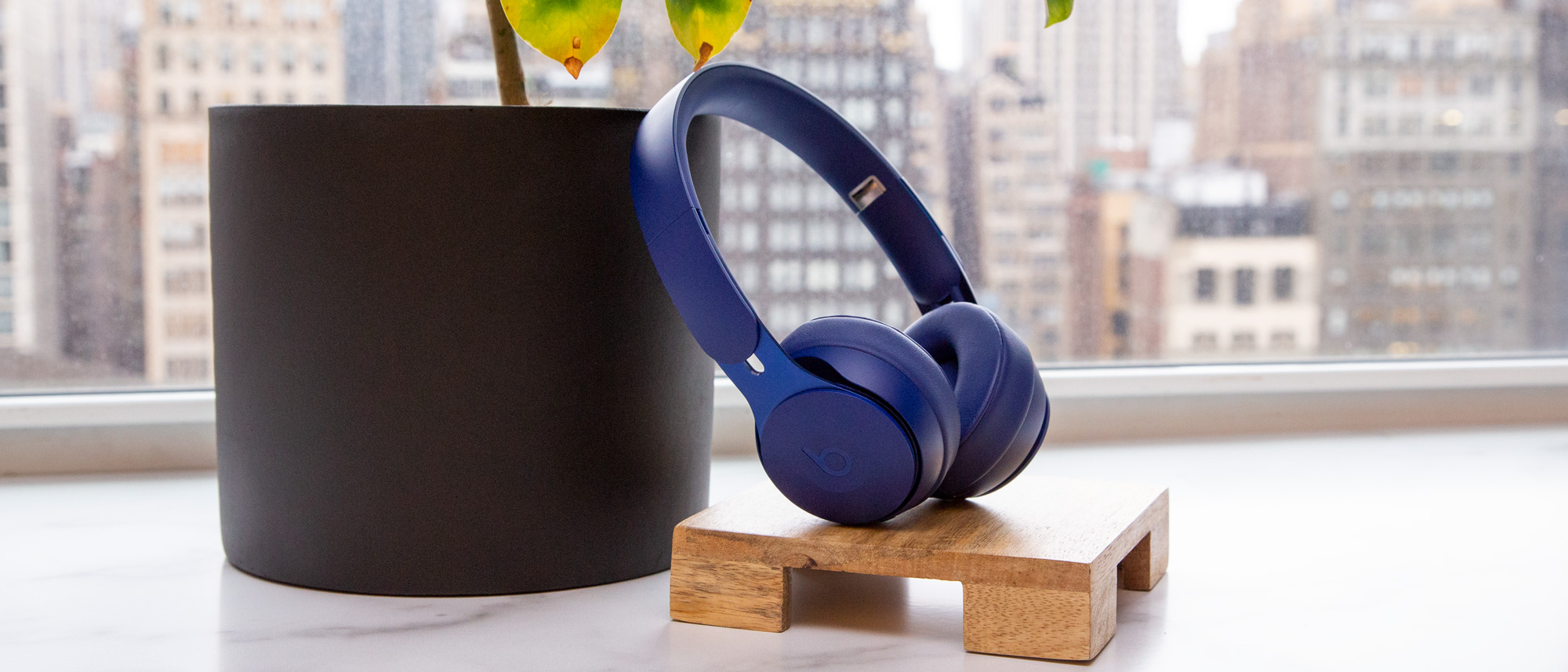Laptop Mag Verdict
Beats' Solo Pros are an excellent pair of on-ear headphones, although comfort could be a problem for some.
Pros
- +
Very good audio quality
- +
Effective noise cancellation
- +
Super-simple pairing
- +
Iconic Beats design
- +
Fun color options
Cons
- -
No 3.5mm headphone jack
- -
Tight clamping force
- -
Charges via Lightning port
Why you can trust Laptop Mag
The days of Bose dominating the noise-cancelling headphone market are over. Sony struck first with the WH-1000XM3 headset, and now Beats by Dre is taking the stage with the Solo Pros, on-ear headphones that produce surprisingly good sound and noise cancellation. Separating the Solo Pros from the competition is Apple's H1 chip, which simplifies pairing and adds unique features to the headphones, including Audio Sharing.
If only the Solo Pros were more comfortable and had a 3.5mm headphone jack, then they'd be a genuine alternative to the Bose 700 headphones. Still, the Solo Pros are an excellent addition to Beats' offerings and are worth their $300 asking price. The cans are also the latest addition to our best noise-cancelling headphones page.
Beats Solo Pro price and availability
At $299, the Beats Solo Pro aren't cheap, but other noise-cancelling options are even more expensive. Sony's WH-1000XM3 cost $349, and Bose's Noise Cancelling Headphones 700 will run you $399.
You can buy the Beats Solo Pro at major online retailers, including Amazon, Best Buy and Walmart. You can also get them directly from Apple or Beats by Dre.
What's in the box?
Beats by Dre ships the Solo Pro with a proprietary Lightning-to-USB-A charging cable, a soft fabric carrying case and a Quick Start guide.
Beats Solo Pro Design
Boy, these are beautiful in blue. The Solo Pros are a stylish pair of headphones that rock a bold pop of color and some welcome adjustments to an iconic design.
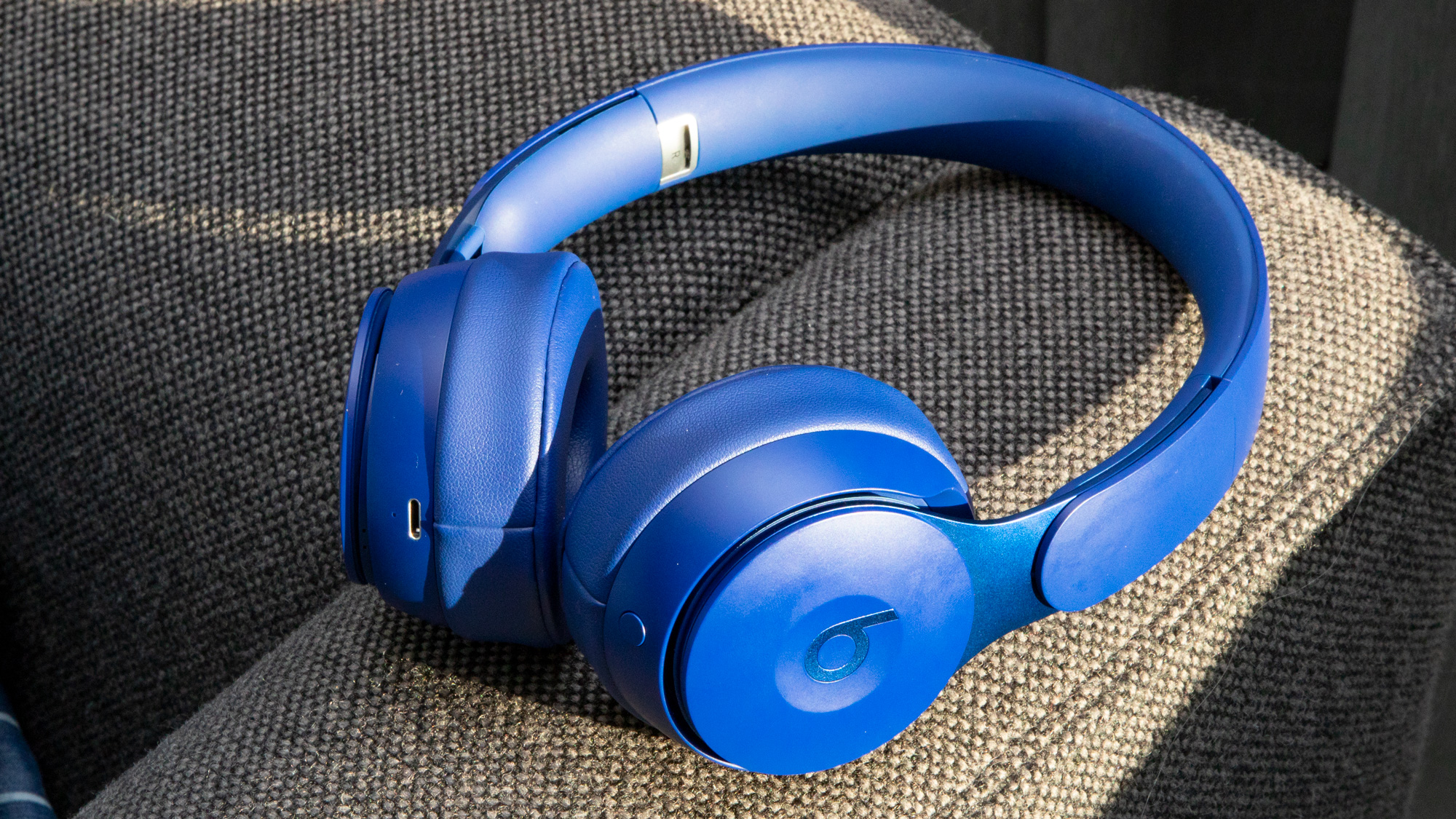
A recognizable undercase "b" logo adorns familiar circular ear cups, which now come in a matte finish. Not only does the surface reduce fingerprints, but it also gives the Solo Pros a more premium, understated appearance.
Sign up to receive The Snapshot, a free special dispatch from Laptop Mag, in your inbox.
In typical Beats fashion, the Solo Pros are available in six colors, including red, dark blue, light blue, ivory and gray. If you prefer a discreet look, you can go with the black variant. I would personally opt for our dark blue review unit. I love how the matte-blue surfaces contrast with the reflective blue arms and turquoise branding on the band.
I always feel weird wearing on-ear headphones, but my fears of looking (more) dorky were overblown. I wouldn't feel embarrassed to wear to the Solo Pros on my commute through New York City.
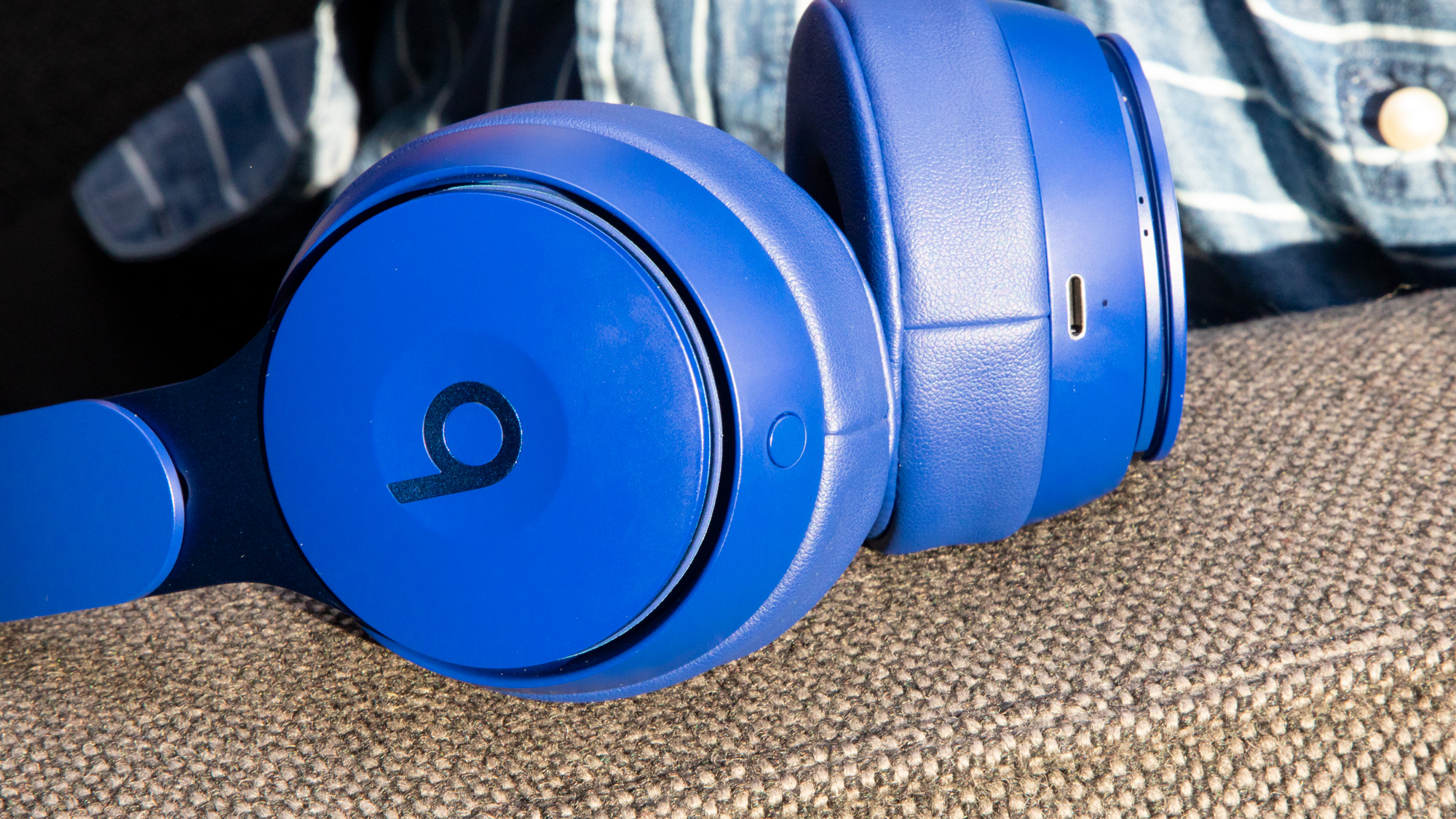
Apple must have had a hand in designing the Solo Pros, because they don't have a 3.5mm headphone port. Without a headphone jack, the Solo Pros aren't compatible with even the most modern in-flight infotainment systems. This wouldn't be an issue if Beats made (and included) its own Bluetooth adapter. Instead, you'll need to rely on a third-party solution, like RHA's wireless flight adapter, if you want to use the Solo Pros on an airplane.
MORE: Best Noise-Cancelling Headphones | Laptop Mag
At 9.4 ounces, the Solo Pros are lighter than the Sony WH-1000XM3 headphones (9.7 ounces) but a bit heavier than the Bose Noise Cancelling Headphones 700 (9 ounces).
Beats Solo Pro Comfort
The Solo Pros aren't the first pair of headphones I'd grab for a long flight. Going from my Sony WH-1000XM3 to the Solo Pros was jarring. My ears immediately told my brain to take the Beats headset off.

The discomfort I felt was partially because the Solo Pros are on-ear headphones, so the pads made direct contact with the edges of my ears instead of going around them (like on over-ear headphones).
But that's no excuse for the Solo Pros' aggressive clamping force or the inward pressure they put on my head. After I'd worn these headphones for a few minutes, the outer edges of my ears tingled and I felt a bit of pain.
After breaking the headphones in, I was able to listen to From Indian Lakes' 59-minute album Dimly Lit without reaching for another pair of headphones. Still, I felt instant relief when I took the cans off, something I never experience wearing the WH-1000XM3 or Bose 700s.
MORE: G Styled: Diddybeats Headphones Aren't Diddy Enough
But just because the Solo Pros don't work for me, that doesn't mean you'll have the same gripes. I'm sensitive to clamping force, and I suspect most people won't be as bothered by the Solo Pros. In fact, Laptop Mag Assistant Managing Editor Sherri L. Smith got used to the pressure enough to listen to the Solo Pros for a few hours without experiencing discomfort.
Beat Solo Pro Controls
Hidden buttons embedded in the exterior of the right ear cup allow you to control certain features directly from the headphone.
Pressing on the center of the b logo on the right ear cup pauses and plays music or answers and ends calls. Double-tapping the logo skips to your next song, while triple-tapping starts a song over or takes you to the previous track. If you'd like to raise or lower the volume while away from your device, you can do so by pushing the top or bottom of the ear cups. To summon a voice assistant (Siri, Alexa or Google Assistant), just press and hold the center button or say "Hey, Siri" when connected to an iPhone.
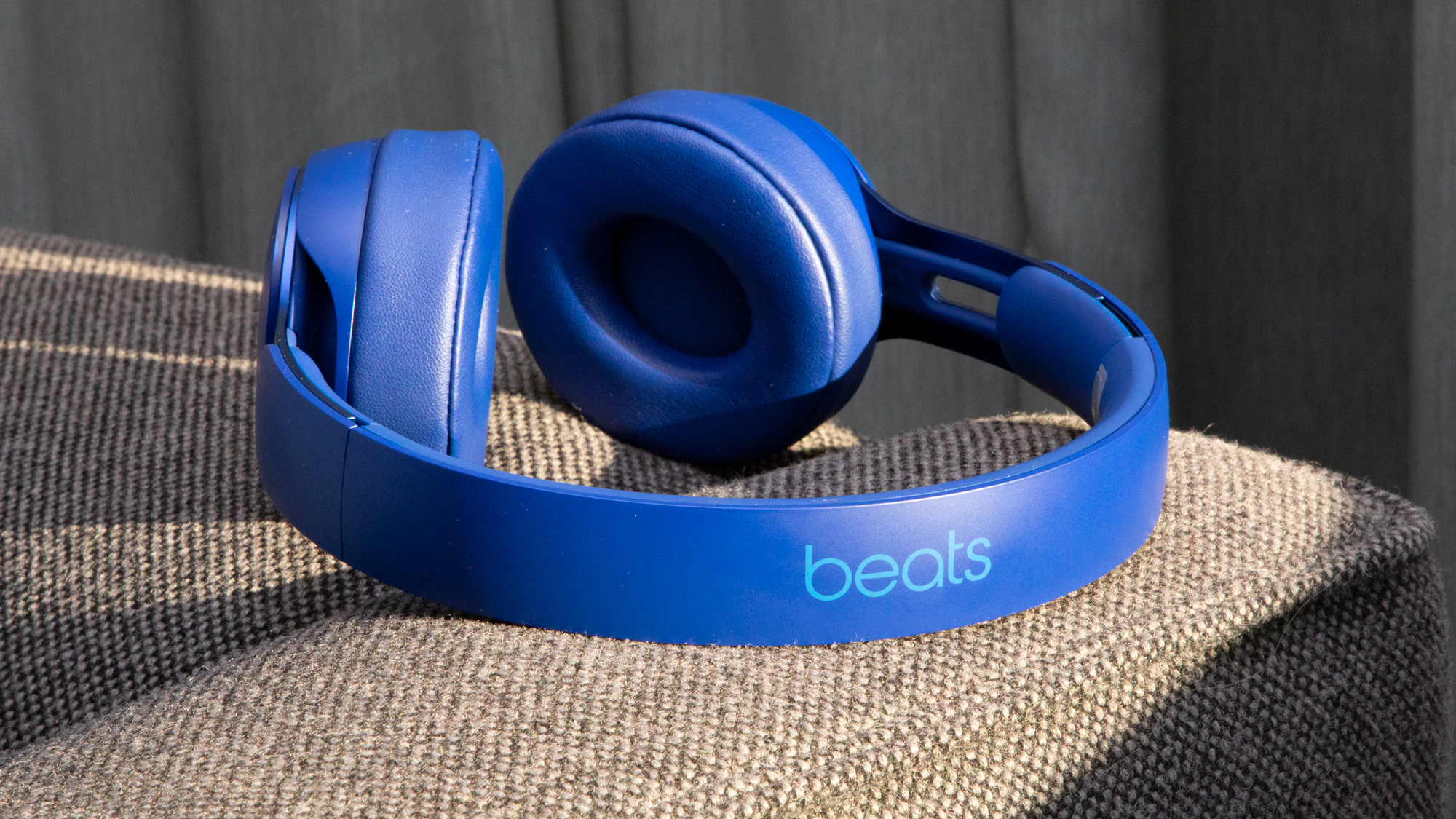
Beats essentially turned the entire circular ear cup into a direction pad that rocks back and forth. It's a clever mechanism that worked reliably during my testing, but I prefer touch-sensitive controls. Pushing anything toward your ear is never a good idea. Along with the added pressure, the buttons made a loud clicking sound that disrupted my music.
With the small, circular button under the left ear cup, you can switch between noise cancelling and transparency mode. You can also press and hold the button to connect or disconnect a device.
Noise cancelling and transparency mode
The Solo Pros did a great job of blocking out the persistent noise of my daily commute through Brooklyn and Manhattan, even if they didn't reach Bose-level quiet.
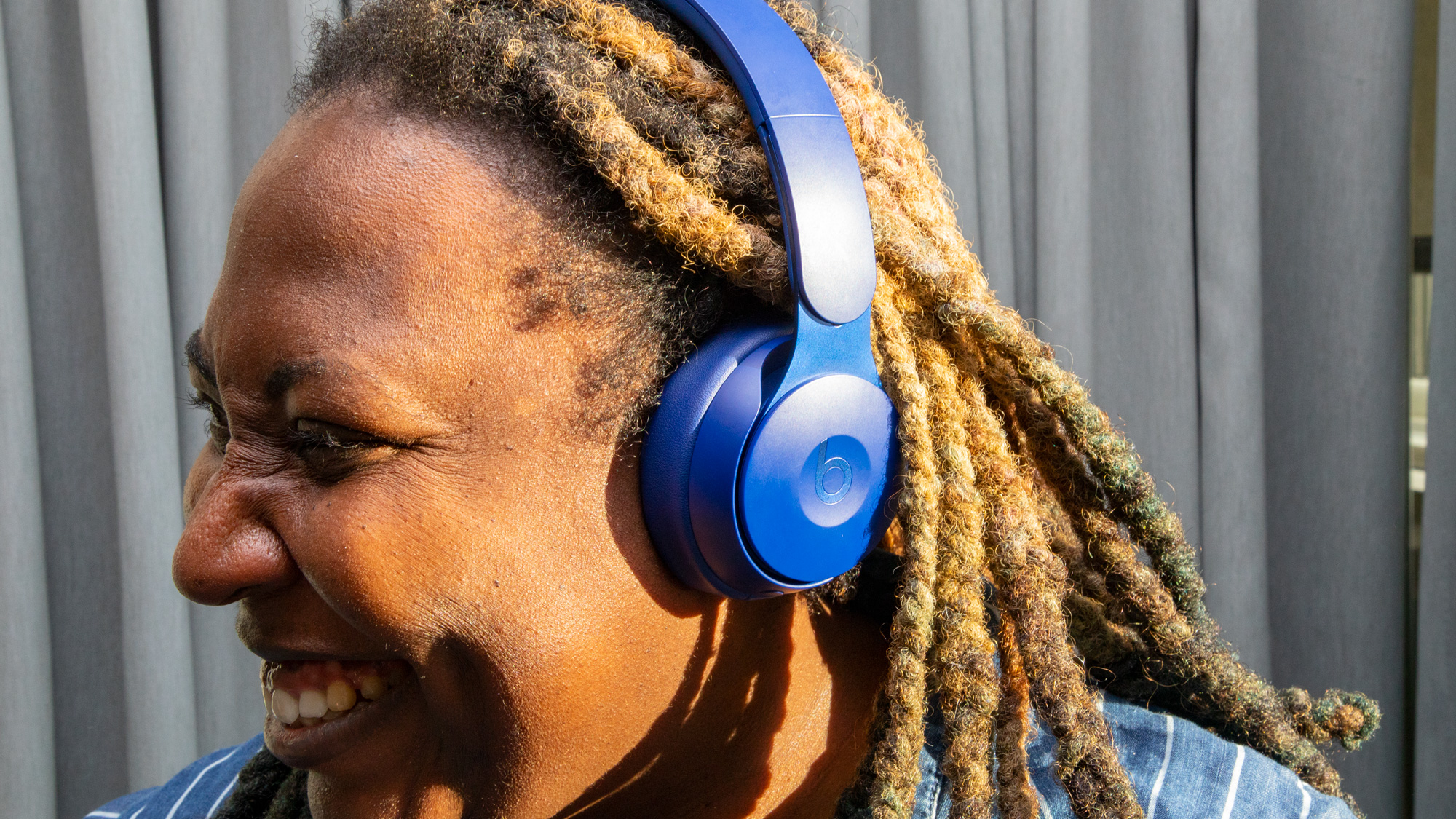
The low rumble of the '70s-era subway train as it clanked through the city was reduced to a quiet growl. I only had to crank tunes to about 50% volume to mask the remaining noise.
In the office, the Solo Pros reduced my colleagues' candy-fueled chatter to a soft whisper. I was impressed to discover that my colleagues' voices were quieter when I listened to the Solo Pros than when I wore the WH-1000XM3 or Bose 700 headphones. That can be attributed to the Solo Pros' on-ear design, which creates some amount of passive noise cancellation on top of the active technology.
Just don't expect the Solo Pros (or any noise-cancelling headphones) to remove all noise. Rather, lower-frequency sounds will be muted while higher sounds are only muffled.
MORE: Top Noise-Cancelling Headphones Now $99 For Prime Day ...
In general, I found that the Beats Solo Pro cancelled out only slightly less ambient sound than my WH-1000XM3s, an impressive feat for on-ear headphones. But neither headset tops the Bose 700 headphones, the leader in this category.
With a click of a button, you can shift from noise cancelling to transparency mode, which has the opposite effect, filtering in more ambient sound so you can be aware of your surroundings. This is especially useful in an airplane, when you want to listen to music in peace but still hear flight attendants as they come around with food or drink.
Pairing and Audio Sharing
Apple's H1 chip gives the Solo Pros a leg up on the competition. Pairing the Solo Pros is as easy as unfolding the ear cups and holding the headphones next to an iPhone. I did this with my iPhone 8 Plus and after a split second, a pop-up appeared on the phone asking whether I wanted to connect the cans. Within seconds, I was all set up and listening to music.
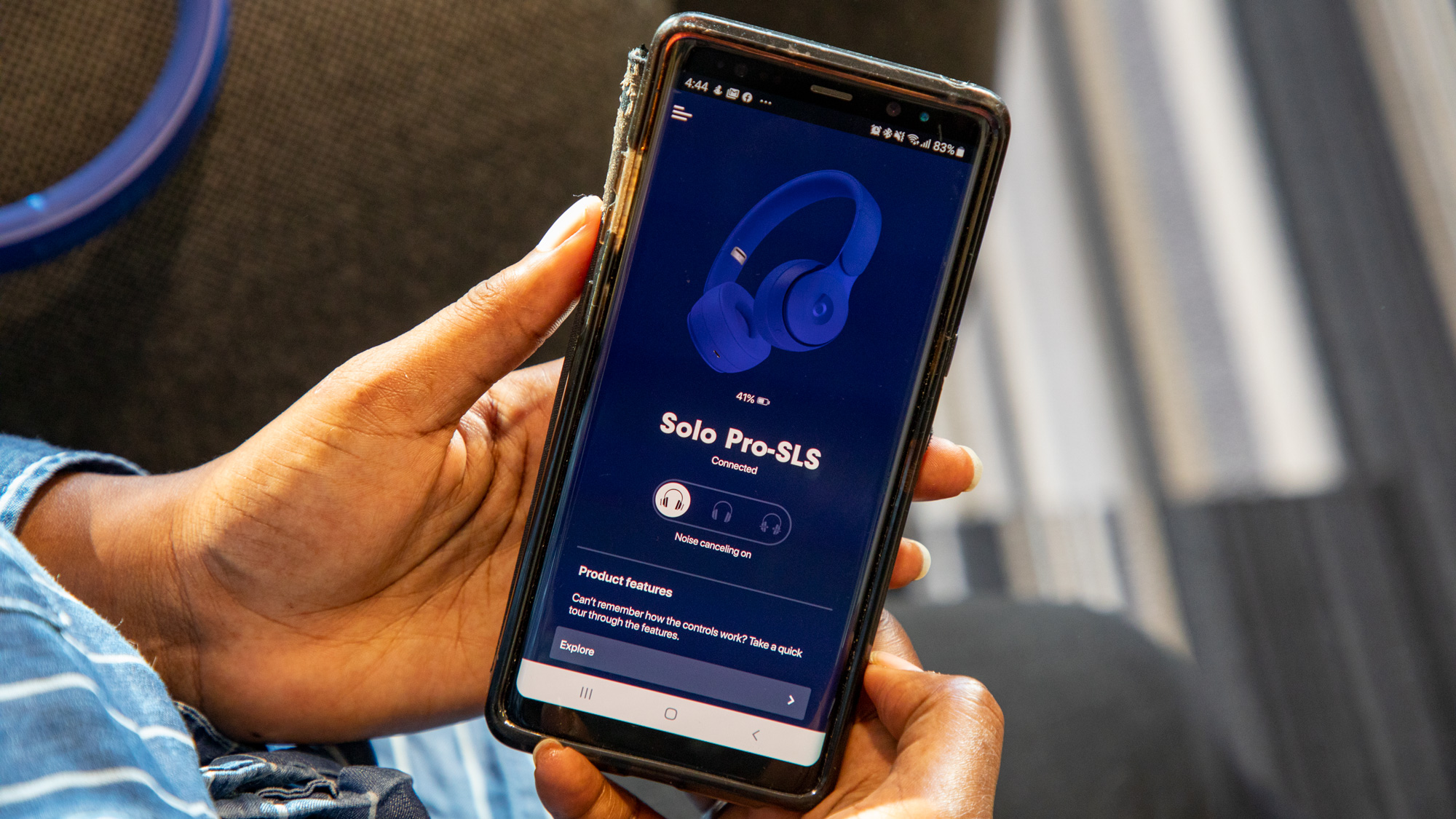
The Solo Pro headphones support Audio Sharing, a new iOS 13 feature that lets you wirelessly share songs, podcasts or movies with someone also wearing a set of Beats or AirPod headphones.
This is basically a high-tech version of when you used to split earbuds with your high school friends so you could both listen to the same song.
The feature worked seamlessly. I simply paired both the Solo Pro headphones and AirPods Pro to an iPhone 8 Plus, then tapped a small audio-sharing icon in the iOS Control Center. This linked the two headphones, so when I played Thrice's "Only Us" on Google Play Music, the song played on both audio devices.
MORE: 5 Best Headphones with Their Own Apps | Laptop Mag
Audio Sharing works only with an iPhone running iOS 13 or later and is compatible with any headphones or earbuds with an H1 or W1 processor. That includes the AirPods, AirPods Pro, Beats Solo Pro, Powerbeats Pro, Studio3 Wireless, BeatsX, Powerbeats 3 Wireless and Solo3 Wireless.
Audio quality
These aren't the Beats I remember.
Tuned to have a more-balanced sound, the 40mm drivers in the Solo Pros can handle any genre of music you throw at them, not just bass-heavy tracks.
Tight, punchy thuds replace the muddy, overextended bass that once plagued Beats headphones. Without a low range dominating the sonic presentation, mid and high notes breathe with improved detail and clarity.
That's not to say that the Solo Pros can't crank out a good amount of bass. The epic bass line in Jay-Z's "No Church in the Wild" slammed my ears with a serious punch. The midbass notes were nicely balanced, but the loose, low-bass thuds could still use some tightening.
The sound quality was closer between the Solo Pro and the Bose 700s than I expected. Ben Howard's hushed vocals in the song "Promise" were rich and detailed on both sets of cans, and there was a crispness to the twang of the acoustic guitar.
MORE: Jukebox Hero App Turns Your Music Library Into a Jukebox | Laptop ...
However, the Solo Pros have a narrower soundstage, so the flurry of noises in more sonically complicated music genres, like EDM or rock, can sound a bit congested. The Bose 700s' wider presentation made a difference when I listened to Glass Animals' "Black Mambo." Dave Bayley's voice was clearer, and the instruments sounded more defined on the Bose than on the Solo Pros.
While I was never blown away by the Solo Pros' sonic abilities, there wasn't any genre of music — acoustic, hip-hop or rock — that didn't sound great on them.
Call quality
"You sound OK," my colleague said when I called him through the Solo Pro headphones. The two microphones the Solo Pros use for calls did a good job capturing my voice, so my colleague didn't have to ask me to speak up or strain to hear what I was saying. My voice sounded more muffled on the Solo Pros than through the Bose 700s, but the Beats headphones get the job done.
Beats Solo Pro app
Beats offers a companion app for Android phones, but there's no good reason to use it. The spartan interface shows you the Solo Pros' remaining battery life and lets you switch between noise cancelling, transparency mode and off (which you can do from the headphones anyway). Among a host of missing features is an equalizer, so you can't adjust the Solo Pros' sound signature to fit your preferences.
Battery life, charging and Bluetooth connectivity
For such small headphones, the Solo Pros offer great battery life. With ANC turned on, the Solo Pros last for 22 hours on a charge. If you turn the battery-hungry feature off, you can listen to music for 40 hours.
In those rare moments when the Solo Pros' battery gets low, Beats' Fast Fuel technology gets you 3 hours of listening in just 10 minutes. Unfortunately, the Solo Pros charge via a proprietary Lightning connector, not the ubiquitous USB-C cord. iPhone owners won't have too many gripes about carrying around another Lightning cord but this could be a deal-breaker for Android users.
The Solo Pros use Bluetooth 5.0, the latest wireless standard, which offers a stable connection from longer distances (up to 50 feet without anything between you and the source). I had no problems listening to music on the opposite end of the office when connected to my work computer.
MORE: Best Tech for Travel
It was only when I turned a corner, putting a wall between the PC and me, that the sound cut out. I was also relieved when the Solo Pros avoided stumbling over any interference in a crowded subway car.
Bottom line
Beats headphones aren't just about looking cool anymore. The Solo Pros are proof of that. This sleek pair of on-ear headphones pumps out refined, balanced sound and features effective noise cancellation and a nifty transparency mode. Apple brings its H1 chip to the Solo Pros, which enables seamless pairing and a fun audio-sharing feature for when you want to listen with friends.
I just wish the Solo Pros were more comfortable. My ears became fatigued by the pressure of the headphones' clamping force. And while the Solo Pros' battery life is great, it's seriously time to ditch the Lightning cable in favor of USB-C. Speaking of ports, the lack of a 3.5mm headphone jack makes it difficult to recommend these headphones to travelers who use in-flight entertainment.
So, should you buy the Solo Pros? If you don't mind their on-ear design, the Solo Pros are an excellent pair of noise-cancelling headphones. But if you can spare another $100, we recommend the Bose 700s, which are a lot more comfortable and have better sound quality.
Phillip Tracy is the assistant managing editor at Laptop Mag where he reviews laptops, phones and other gadgets while covering the latest industry news. After graduating with a journalism degree from the University of Texas at Austin, Phillip became a tech reporter at the Daily Dot. There, he wrote reviews for a range of gadgets and covered everything from social media trends to cybersecurity. Prior to that, he wrote for RCR Wireless News covering 5G and IoT. When he's not tinkering with devices, you can find Phillip playing video games, reading, traveling or watching soccer.
